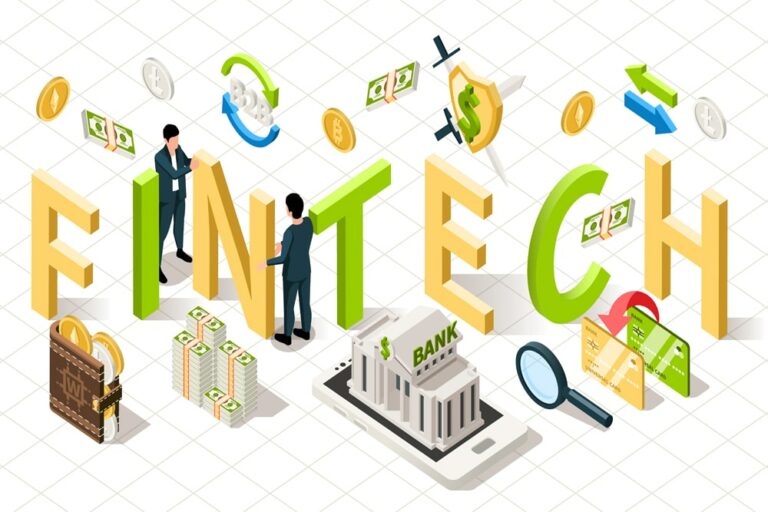In the not-so-distant past, traditional banking institutions were the unquestioned custodians of financial services. They held our savings, facilitated transactions, and determined the fate of loans. Yet, a seismic shift is underway in the world of finance, one that has the potential to reshape the very foundations of banking as we know it. It’s called Decentralized Finance, or DeFi, and it’s heralding a future where financial services are democratized, decentralized, and entirely digital.
At its core, DeFi is a groundbreaking financial system built on blockchain technology, where traditional intermediaries like banks are replaced by smart contracts and decentralized applications. These innovations allow anyone with an internet connection to access a wide array of financial services, from lending and borrowing to trading and yield farming. DeFi’s rise is not just a technological revolution; it’s a movement that embodies financial inclusion, transparency, and autonomy.
The purpose of this article is to explore the burgeoning world of DeFi, dissecting its key components, revealing its potential benefits and pitfalls, and peering into the horizon to envision what the future of banking might look like in this decentralized landscape. As we embark on this journey through the realms of DeFi, we’ll uncover the transformative power it wields, its ability to reshape the global financial ecosystem, and the challenges that lie ahead on the path to this decentralized future. So, fasten your seatbelts as we delve into the fascinating universe of Decentralized Finance, where traditional banking meets its digital
What is DeFi?
To understand the significance of Decentralized Finance (DeFi), we must first grasp its foundational concept. DeFi represents a paradigm shift in the way we think about and interact with financial services. At its core, DeFi is a financial system that operates entirely on blockchain technology, particularly the Ethereum blockchain, which has emerged as the primary platform for DeFi applications.
Unlike traditional banks and financial intermediaries, DeFi relies on smart contracts – self-executing agreements with predefined rules – to automate and facilitate transactions without the need for intermediaries. These smart contracts are open-source and accessible to anyone, providing transparency and trust in the system.
DeFi encompasses a wide range of financial services and applications, including but not limited to:
Decentralized Exchanges (DEXs): These platforms enable users to trade cryptocurrencies and tokens directly from their wallets, eliminating the need for centralized exchanges.
Lending and Borrowing: DeFi protocols allow users to lend their digital assets and earn interest or borrow assets by providing collateral, all governed by smart contracts.
Yield Farming and Liquidity Provision: Users can provide liquidity to decentralized exchanges and liquidity pools, earning rewards and fees in return.
Stablecoins: DeFi has given rise to algorithmic stablecoins, which aim to maintain a stable value by automatically adjusting their supply based on demand.
Asset Management: DeFi platforms offer services for asset management and automated portfolio rebalancing.
Insurance: Decentralized insurance protocols provide coverage against smart contract vulnerabilities and other risks.
Derivatives: DeFi derivatives markets allow users to trade and speculate on various assets’ future prices.
Governance: Many DeFi projects operate under decentralized autonomous organizations (DAOs), where token holders participate in decision-making processes.
One of the key drivers of DeFi’s popularity is its promise of financial inclusivity. It removes the barriers to entry that traditional finance often imposes, allowing anyone with an internet connection and a cryptocurrency wallet to access these services. Moreover, DeFi operates 24/7, offering users unprecedented flexibility and control over their financial activities.
However, while DeFi brings remarkable opportunities, it’s not without its challenges. Security risks, smart contract vulnerabilities, and regulatory uncertainties are among the concerns that the DeFi community must navigate. Nevertheless, as DeFi continues to evolve and mature, its potential to disrupt and redefine the financial industry remains undeniable.
Benefits of DeFi
Decentralized Finance (DeFi) is gaining momentum in the financial landscape, and for good reason. It offers a myriad of benefits that have the potential to reshape the way we interact with and perceive traditional financial systems. Here are some of the key advantages of DeFi:
Financial Inclusion: DeFi is inherently inclusive, as it operates on blockchain networks accessible to anyone with an internet connection. This means individuals in underserved or unbanked regions can participate in financial services without the need for a traditional bank account.
Accessibility: DeFi eliminates gatekeepers and intermediaries, enabling users to manage their finances directly from their wallets. This accessibility extends to a wide range of financial services, including lending, borrowing, trading, and more.
Global Reach: DeFi is borderless, allowing users to engage in financial activities on a global scale. Cross-border transactions become seamless, and users can access a diverse array of assets and markets.
Transparency: Transactions on the blockchain are transparent and immutable. Every transaction and smart contract execution is recorded, providing a high level of transparency and reducing the potential for fraud or manipulation.
Security: While DeFi is not entirely risk-free, it employs cryptographic security measures and smart contracts to automate processes. Users have control over their private keys and funds, reducing the risk of centralized exchange hacks.
Cost Efficiency: Traditional financial services often come with hefty fees and commissions. DeFi minimizes these costs by removing intermediaries, allowing users to save on transaction fees and other expenses.
Liquidity: DeFi protocols facilitate liquidity by incentivizing users to provide assets to decentralized exchanges and liquidity pools. This liquidity ensures that users can trade or access assets without significant price slippage.
Programmability: Smart contracts are at the heart of DeFi, enabling the creation of customizable and programmable financial instruments. Users can automate tasks, set conditions, and execute complex financial strategies.
Ownership and Control: DeFi puts users in control of their assets. They maintain ownership of their private keys and have the final say over their financial decisions. This contrasts with traditional finance, where custodial control is common.
Decentralized Governance: Many DeFi projects operate under decentralized autonomous organizations (DAOs), where token holders have a say in protocol upgrades, changes, and governance decisions. This ensures community-driven development and decision-making.
Innovative Financial Products: DeFi continually introduces novel financial products and services. From algorithmic stablecoins to yield farming and decentralized derivatives, users have access to innovative opportunities for investing and growing their assets.
24/7 Availability: DeFi operates 24/7, without the limitations of banking hours or holidays. Users can trade, lend, and access financial services whenever they choose.
While these benefits are compelling, it’s crucial to recognize that DeFi also carries risks, including smart contract vulnerabilities, regulatory uncertainties, and market volatility. As the DeFi ecosystem matures, addressing these challenges will be paramount to unlocking its full potential.
Challenges and Risks of DeFi
While DeFi offers exciting opportunities, it’s not without its challenges and risks. Here are some of the key considerations:
Smart Contract Vulnerabilities: DeFi protocols rely heavily on smart contracts, which are lines of code that execute automatically. If there are vulnerabilities in these contracts, it can lead to hacks or exploits. High-profile incidents like the 2020 “flash loan” attacks have highlighted the need for robust code audits and security measures.
Regulatory Uncertainty: DeFi operates in a relatively unregulated environment. This brings both innovation and uncertainty. Regulatory agencies are still grappling with how to oversee this space, which could lead to potential legal and compliance risks for users and projects.
Market Volatility: DeFi assets, especially cryptocurrencies, are known for their price volatility. While this can create opportunities for traders and investors, it also poses substantial risks. Users can experience significant losses if they don’t manage their portfolios carefully.
Scalability Challenges: DeFi has faced scalability issues due to the limited capacity of certain blockchain networks. This can result in slow transaction times and high fees during times of network congestion, impacting the user experience.
User Errors: Since DeFi gives users more control over their assets, it also means they are responsible for their security. Mistakes, such as sending assets to the wrong address or falling for phishing attacks, can result in irreversible losses.
Lack of Consumer Protections: Traditional financial systems often come with built-in consumer protections, such as insurance on deposits. DeFi lacks these safety nets, and users may have little recourse in case of a problem or dispute.
Complexity: DeFi platforms can be complex and challenging to navigate for newcomers. The abundance of options and projects can be overwhelming, and users may struggle to understand the risks associated with different DeFi protocols.
Market Manipulation: The decentralized nature of DeFi makes it susceptible to market manipulation. Pump-and-dump schemes and insider trading can still occur, and users need to exercise caution.
Interoperability Issues: DeFi protocols are often built on different blockchain networks, and achieving interoperability can be a technical challenge. This can limit the seamless flow of assets and data across the ecosystem.
Centralization Tendencies: Paradoxically, some DeFi projects have exhibited centralization tendencies, such as governance controlled by a few major players. This can undermine the decentralization principle on which DeFi is based.
Integration with Legacy Finance: Bridging the gap between DeFi and traditional finance can be challenging. Integration often involves regulatory hurdles, technical complexities, and resistance from legacy financial institutions.
Economic Models: DeFi projects often rely on complex economic models, which can be difficult to understand fully. Users may not grasp the long-term sustainability and profitability of a project.
While these challenges and risks exist, they are not insurmountable. The DeFi community, along with developers, regulators, and users, is actively working to address these issues to create a more robust and secure ecosystem for decentralized finance.
Use Cases and Real-World Examples of DeFi
Decentralized Finance (DeFi) isn’t just a theoretical concept; it has real-world applications that are changing the landscape of traditional finance. Here are some prominent use cases and real-world examples:
Decentralized Exchanges (DEXs): DEXs allow users to trade cryptocurrencies directly with one another without the need for intermediaries. Uniswap is a well-known DEX that uses automated market makers (AMMs) to facilitate trading. Users can swap various tokens without creating accounts or trusting a central authority.
Lending and Borrowing: DeFi platforms enable users to lend their assets and earn interest or borrow assets by providing collateral. Aave is a prime example, allowing users to deposit assets and earn interest, or borrow against their assets by locking them as collateral. This creates opportunities for both lenders and borrowers.
Stablecoins: Stablecoins like DAI are essential in DeFi as they provide a stable store of value within a highly volatile cryptocurrency market. These stablecoins are often used as collateral for loans and as a medium of exchange on DeFi platforms.
Yield Farming and Liquidity Provision: Yield farming involves providing liquidity to DeFi protocols in exchange for rewards. Compound and Yearn Finance are examples of platforms that incentivize users to supply assets to their liquidity pools, earning interest and governance tokens in return.
Automated Portfolio Management: DeFi offers automated portfolio management through protocols like Set Protocol. Users can create or follow sets, which are baskets of assets managed by smart contracts. This simplifies diversification and rebalancing for investors.
Insurance: DeFi also ventures into insurance. Projects like Nexus Mutual allow users to pool funds and provide insurance coverage for smart contract vulnerabilities or other risks. Users can purchase coverage and submit claims in a decentralized manner.
Decentralized Identity: Self-sovereign identity solutions, such as uPort, give users control over their digital identities. This can have applications in financial services, enabling more secure and privacy-centric user verification.
Cross-Border Payments: DeFi can facilitate cross-border payments and remittances. Stellar, for example, is a blockchain network designed for fast and low-cost international transfers. Users can send tokens representing traditional currencies across borders with minimal fees.
Tokenization of Real Assets: DeFi can tokenize real-world assets like real estate, art, or stocks. This allows fractional ownership, making it easier for a broader range of investors to access these assets. Projects like RealT are involved in real estate tokenization.
Decentralized Oracles: Reliable data feeds are crucial for DeFi smart contracts. Chainlink, an oracle network, connects smart contracts with real-world data sources, ensuring the accuracy of information used in various DeFi applications.
These use cases represent the tip of the iceberg in the world of DeFi. As the ecosystem continues to evolve, we can expect even more innovative applications that challenge traditional financial systems and offer greater financial inclusivity, transparency, and efficiency. However, it’s essential to keep in mind that DeFi is still a relatively nascent field, and users should exercise caution and conduct thorough research before participating in any DeFi project or investment.
The Future of DeFi
The trajectory of Decentralized Finance (DeFi) is marked by innovation and the potential to reshape traditional financial systems. Here’s a glimpse into the exciting future of DeFi:
Mainstream Adoption: DeFi is on the brink of broader adoption. As more user-friendly interfaces and improved security measures are developed, non-tech-savvy individuals will find it easier to participate. Mainstream financial institutions are also exploring ways to integrate DeFi services.
Regulatory Challenges: As DeFi grows, regulatory scrutiny is expected to intensify. Governments and regulatory bodies will likely focus on issues such as anti-money laundering (AML) and know-your-customer (KYC) requirements. Striking a balance between innovation and compliance will be crucial.
Interoperability: The DeFi space currently comprises various isolated protocols. In the future, we can expect increased interoperability between these platforms, creating a more seamless user experience. Protocols like Polkadot and Cosmos are working toward this goal.
Scalability Solutions: Scalability remains a challenge for DeFi platforms, often leading to high transaction fees and slow confirmation times during periods of high demand. Layer 2 solutions like Optimistic Rollups and Ethereum 2.0’s transition to proof-of-stake aim to address these issues.
DeFi Derivatives: DeFi will likely see the expansion of decentralized derivatives markets. This could include options, futures, and other complex financial instruments. These markets can be more transparent and accessible compared to their centralized counterparts.
Cross-Chain Integration: DeFi’s future may involve more projects bridging different blockchain networks. This would enable users to access DeFi services across multiple blockchains, enhancing liquidity and reducing reliance on a single network.
Improved Security: Security will remain a top priority. DeFi projects will continue to invest in rigorous security audits and testing to prevent vulnerabilities and hacks. Decentralized insurance protocols like Nexus Mutual may play a significant role in mitigating risks.
Decentralized Autonomous Organizations (DAOs): DAOs are gaining traction within DeFi. They are decentralized entities governed by token holders. In the future, we may see DAOs taking on more complex functions, including decision-making for protocol upgrades and treasury management.
Financial Inclusion: DeFi has the potential to significantly enhance financial inclusion, particularly in regions with limited access to traditional banking services. DeFi applications can provide unbanked and underbanked populations with access to loans, savings, and investments.
DeFi in Traditional Finance: Traditional financial institutions are recognizing the value of DeFi. We can expect partnerships and collaborations between DeFi projects and established players, leading to the hybridization of financial services.
Environmental Concerns: As the environmental impact of blockchain networks gains attention, DeFi projects may prioritize energy-efficient solutions and sustainability to address these concerns.
Education and User Awareness: Wider adoption will rely on improved user education and awareness. DeFi platforms will need to invest in user-friendly interfaces and educational resources to help users navigate the complexities of DeFi safely.
In summary, the future of DeFi holds tremendous promise for transforming the way we interact with and access financial services. While it comes with challenges, such as regulatory hurdles and security risks, the ongoing innovation in the DeFi space suggests that it will play an increasingly influential role in shaping the future of finance. As it continues to evolve, DeFi has the potential to foster greater financial inclusivity, transparency, and efficiency on a global scale.




